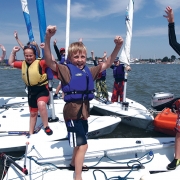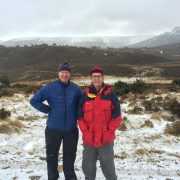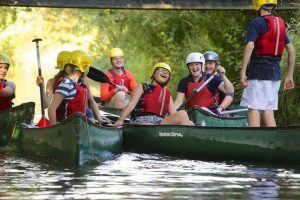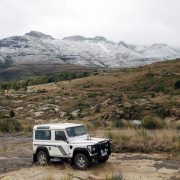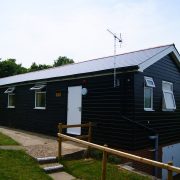Posts
Manager’s Travels
/in Manager's Travels/by Activities Industry MutualHere’s the latest blog from our new Mutual Manager Sophia Reed on her travels.
This is a great job and one of the best aspects which I particularly love is getting out and about to meet as many of our AIM Members as possible. This is a very busy season for us as well as for you, with plenty of renewals and the opportunity to come and see you. I have really enjoyed my recent trips and thought that I would share some of these with you, and say a big thank you to the Members who have hosted me and shown me their centres and activities. I hope to meet as many of our other Members as possible over the coming months.
Scotland (first trip!)
I had a super few days earlier in March visiting Aboyne to the west of Aberdeen and meeting Alex from FireTrail and learning all about their annual Illuminator Race which is held in October. This is a 25km night race over varying terrain and which I am very much looking forward to attending later this year. I also learned all about the school groups activities and the Beast 10km obstacle races.
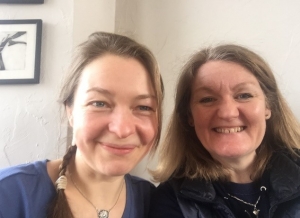
Then I travelled up to Outfit Moray to meet with Tony and learn all about their group events and biking activities and in particular the scheme they have for repairing old and discarded bikes and putting these back into good use. The weather was kind and the coastal scenery stunning!
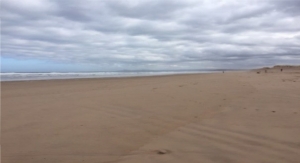
Next was a stopover in Grantown on Spey and a visit to Suresh at Equal Adventure to see first hand how he puts in practice his Can Do attitude to outdoor adventures for disabled people, and of course to marvel at his incredible workshop! From there to Aviemore and the exciting Zip Trek trail run by G2 Outdoors. Mike Gale there was very kind in showing me round their activities and in taking me up the mountain to the starting point of the zip trek trail, comprising 14 individual zip wires which take the participant from the top back down to the base.
Scotland (second trip)
Being half Scots I relish being up in Scotland and am thrilled we have so many of you there who we can come and see. On this trip I was accompanied by James Willis and we started off on the overnight Caledonian sleeper from London to Glasgow. Then a short hop across to the beautiful island of Arran to visit Colin Morrison at Auchrannie and to take in the sights of their hotel complex and many activities including their large gymnasium. From there we drove up to the top end of the island to Lochranza where we met with Stuart and learned about the school groups who stay at their field studies centre and indulge in geological research, and were treated to stags on the golf course and seals on the rocks at mid tide!
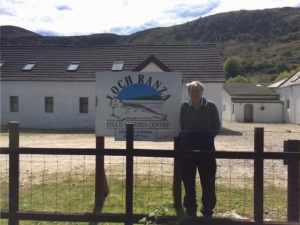
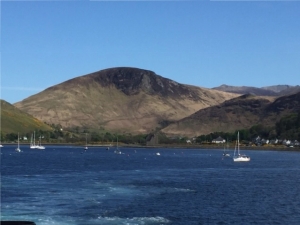
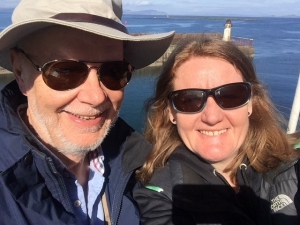
From there we travelled to Oban and met with Jane from Hebridean Pursuits and discussed their charity arm and the work they do with school and other groups in mountaineering courses and development through outdoor experiences.
Our next stop was to meet with James at Ossian Developments and check out with envy their niche luxury riverside lodges and learn about their Segway excursions, an activity which is hugely popular and on the increase with so many of our Members. From there we travelled to see Ben Starkie at Vertical Descents and learn all about their new Via Ferrata which they have constructed in a local gorge, providing a thrilling vertical descent up and across the gorge and waterfall.
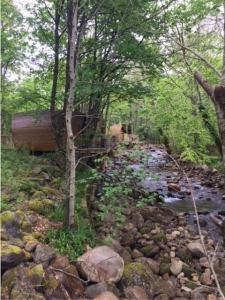
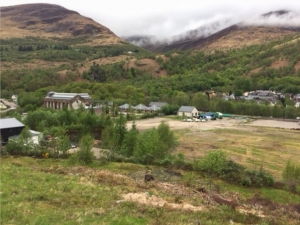
The next day after a pre breakfast run (me) and a walk (James) with magnificent views of Ben Nevis we moved indoors at Three Wise Monkeys climbing centre at Fort William and met with Peter and Ollie. The climbing centre is housed in a former church situated on a hill so provides a perfect height and gradient for climbing walls! One of AIM’s newest Members, the clientele is diverse ranging from very experienced climbers and mountaineers, as well as guides, to local families and children’s groups and college students.
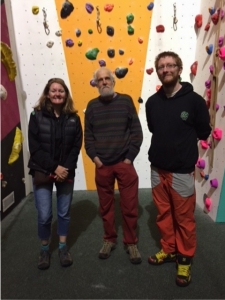
From there we rounded off our trip with another visit to Grantown on Spey (again) to meet with Les Durance and to see the accommodation he provides to vulnerable youngsters and the opportunities his company provides to re introduce them into education and give them opportunities to develop and grow as young people.
I boarded a plane at Inverness bound for London and left James with the prospect of a trip to Skye where the Cuillin Ridge beckoned him. More about that shortly!
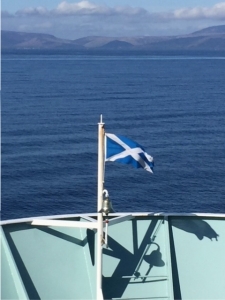
Cheshire and Wales
I started off with a visit to Woodland Adventure based in Walsall and met with Darren who showed me round their residential accommodation and numerous outdoor activities. I thoroughly enjoyed seeing the Year 6 group who were relishing their turns on the zip wire traversing the small lake!
Next stop was Manley Mere where the lake sparkled in the very warm afternoon sunshine and a lovely meeting with Jane who gave me a tour of the centre which provides numerous water sports activities and lake swimming, as well as an adventure trail. The newest addition is the thrilling inflatable challenge course, appealing to both young and old!
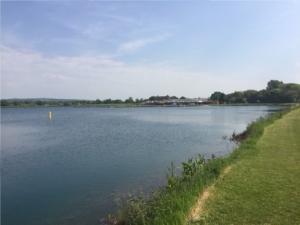
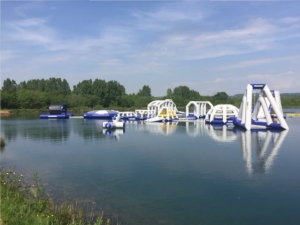
After a birthday dinner for my Mum, I set off and headed up to West Lancashire to Rock & River where I was well looked after by Lee and Anna who showed me their new chalet accommodation and recent renovations as well as their variety of activities including a super Swamp Romp and stunning high ropes course!
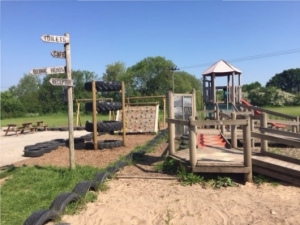
From there to meet with Dave Orange at Open Door, which is based in a 19th Century manor house, set in a stunning valley, and to hear all about the groups who visit them there and to witness some excellent raft building culminating in an exciting raft race by a Princes Trust group who were on a residential trip. I rounded off my visit with a scramble in the caves!
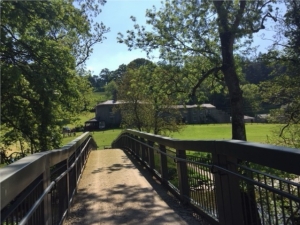
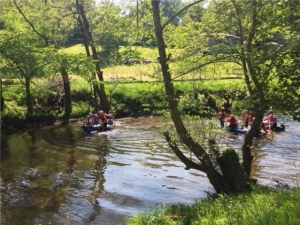
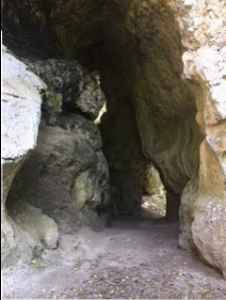
En route back to the South, my last stop was RYG at Bala to see Ed. Arriving early, I was handed a much needed cup of coffee and met all the staff and learned what activities they were each providing to the Year 5 & 6 school group which was staying at their centre. Climbing, sailing and orienteering were all on the day’s agenda and I rounded off my visit with a tour of the stores and a delicious piece of home made flapjack!
So a huge thank you again to everyone I met with who gave up their time to see me and for their fabulous hospitality. Thank you all for showing me your activities and letting me see first hand what you do.
Glasgow Climbing Centre – Member Profile
/in News/by Activities Industry MutualMember Profile
The AIM team have been out and about meeting members during busy renewal season. Our Account Executive Ralph Doe recently made it to Scotland to visit long standing member Neil Mackay from Glasgow Climbing Centre/ Climbzone.
Glasgow Climbing Centre have been covered with AIM for over 10 years and are continuing to branch out and try new and exciting activities to add to their portfolio. The unusual premises based in an old church purchased 24 years ago as a derelict shell are now home to a mix of climbing styles from slabs and vertical walls to the steeply overhanging; from short boulder problems to athletic 16 meter routes.
At the Climbzone site you can try your hand at a number of activities including freestanding climbing walls, a state of the art 60m long aerial adventure course called The Skypark, Twin Power Fan Descenders at The Drop and the newest activity The Big Slide. The UK’s tallest indoor slide is 16m high and 40m long. Owner & Director Neil Mackay designed the slide himself and used a fabricator in Germany to build it. It’s generating a lot of interest, both kids and those adults who are young at heart can visit the slide for the same cost.
How long have you been in business and what were your reasons for joining AIM:-
I bought the church that Glasgow Climbing Centre is in 24 years ago, and have been at Soar @ Intu Braehead with Climbzone for 12 years.
Good insurance is an essential part of business – especially when you operate what appear to be high risk activities. In the early days, I was fairly disillusioned with the insurance options that were available within the outdoor activities market and so I was delighted when AIM was started. I signed up immediately as I recognised the benefits of a mutual that worked for its members and not for itself. AIM also understood the actual activities that were being provided by the members and that specialist knowledge made everything easier
What is your most popular activity?
Sky Park and Fan drop at Climbzone. We get a lot of regulars at the Climbing Centre too but it’s always busy at Climbzone and the Giant Slide has been really popular with visitors.
What is the biggest challenge you face running your business?
Staffing. We have a small group of long term staff and a large group of short term seasonal staff. There are high costs involved in training the seasonal staff and many are student studying for exams which can cause problems.
Where is your next holiday destination?
In June I’m taking on the Route Des Grandes Alpes which runs from Geneva to Nice and includes all the highest passes in the Alps. I should have been training since Christmas.
For more information and to read all about the Big Slide at Climbzone please follow these links.
DofE Case Study – Lessons Learned
/in News/by Activities Industry MutualThe Duke of Edinburgh’s Award (DofE) is the world’s leading achievement award for young people. Its ethos is to enable every young person of every background to take part and succeed, regardless of any barriers.
Many of our Members will be familiar with the programme, in which young people aged between 14 and 24 progress through three levels to achieve a Bronze Silver or Gold award.
It requires persistence, commitment and has a lasting impact on the attitudes and outlook of all young people who do their DofE, building confidence and self-esteem. Awards are delivered under special licence by over 400 partners, many being members of AIM, supporting nearly 11,000 DofE centres including youth clubs, voluntary organisations, schools, colleges, young offenders institutions and businesses.
As with any worthwhile award, there is no guarantee that all participants will achieve the required standard. As well as successes there will be disappointments and occasionally a disappointed parent may look for someone to blame for their child’s unexpected set-back, be it a DofE Award or an elusive A* grade. There may be an element of this in two claims for personal injury compensation arising from DofE activities.
Claim 1 –
The first claim involves a high achieving schoolgirl, Emma, participating in a Gold practice expedition managed by the school with the help of qualified instructors hired to assist in specific elements. Emma developed a strain, which may have been an exacerbation of a previous shoulder injury, from stoically carrying her rucksack through the expedition, despite suffering discomfort. Offers were made by staff to take her rucksack, which she consistently turned down, wanting to continue to the end. By the end of the expedition, the discomfort had developed into a strained shoulder which required attention and physio treatment follow up. Although she withdrew from the actual Gold award expedition, we are told that she was soon back playing netball in the school team. Her disappointed parents decided to sue both the school and the instructors, alleging that their negligence causing Emma’s injury.
Claim 2 –
The second claim involves a schoolgirl, Coral, in a group of seemingly less than enthusiastic or uncooperative participants in a Silver award expedition. In deteriorating misty and drizzly conditions, the specialist provider managing the expedition, decided to call the groups off the hillside shortly after midday. This instruction was acknowledged by Coral, who had been appointed as the nominated point of contact in her group. However, shortly after the call, Coral went “off air”; her phone had been turned off and the group was no longer in contact. An hour later, communication with the group was re established (briefly), as they had met up with another group with a working phone and once again they were instructed to come down off the hill. It soon became clear that this instruction too was not complied with and they were off air again, so the leaders set out themselves to search for the group. Later, some 45 minutes later, the leaders received a phone call from the group; they were now situated even further up the hill, cold and wet. This time they were told to put up a tent for shelter in an area that is visible to rescuers and have some hot food to keep warm. However, they decided to settle inside a wooded area out of vision and telephone Mountain Rescue. A while later they were helicoptered out, colder and wetter.
Coral’s parents blame the expedition provider and have lodged a claim for compensation alleging that a “non-freezing cold injury” to their daughter’s feet was caused by their negligence. Who actually is deemed to have been at fault for this non serious injury will be decided in court.
Lessons learned
In both cases the injuries are minor and the claims detract from the work that the schools and instructors put in to provide the real benefits to their charges that the DofE programme offers to young people and society as a whole. Both cases have cost the schools and providers a great deal in terms of potential cost and management time and, in Emma’s case, school has decided not to manage any more DofE programmes in the future.
In the first case, admirable though Emma’s determination to carry on was, had she accepted the help with her rucksack that she was offered, it is likely she would have continued and achieved her Gold Award. So for teachers and providers, it is important that individual participants and their attitudes are monitored closely. Where a school is managing the programme and hiring instructors for specific elements, it’s important that the division or delegation of responsibilities is made crystal clear and documented at the outset.
In the second case, a lack of commitment of some of the participants seems apparent. It’s important that the expedition programme manager, as well as constantly monitoring the commitment of participants, ensures that the parents too actually “buy in” to the programme. They can contribute by supporting their kids jointly with the teachers at school, so that all parties are committed and fully aware of the responsibilities and rewards involved in the challenge.
The names of the participants have been changed to preserve anonymity.
AALA Licensing – AIM Member Survey Results
/in News/by Activities Industry MutualWhat our members said
We recently sent out a member survey to gauge members views on the AALA Licensing review and we had an excellent response rate with members submitting their views to the three options posed by the HSE. For those of you not familiar with this, the HSE have set up a review to the current AALA licensing scheme and were asking all providers to respond.
- Option 1 – Retain the AALA regulations and current licensing scheme underpinned by the Health and Safety at Work etc. Act 1974, and increase fees
- Option 2 – Retain the AALA regulations and current licensing scheme underpinned by the Health and Safety at Work etc. Act 1974, extend the activities in-scope and increase fees.
- Option 3 – Removal of the AALA regulations and move to an industry-led; not-for-profit accreditation scheme underpinned by the Health and Safety at Work etc. Act 1974, to provide assurance to users of outdoor activities
The HSE survey is now closed and the HSE have advised that all responses will be analysed and will engage further with stakeholders to further develop the preferred option. http://www.hse.gov.uk/aala/
As AIM is a membership community providing Public and Employers liability cover to activity providers we have also submitted our own response. Responses from the members can be viewed here. If you require further information about the survey please do not hesitate to contact me on [email protected]
Data_All_180418Sense & Defensibility – Recent Legal Cases and what you need to know
/in News/by Activities Industry MutualOur Mutual Manager Sophia Reed presented an update at our member event on some legal cases which provide valuable lessons learned on claims. A copy of her slides can be viewed here.
SR-AIM-Presentation-09-03-18
Celebrating 10 Years of AIM
/in News, Newsletters/by Activities Industry MutualIt is now 10 years since the Activities Industry Mutual (AIM) first opened its doors for
business as a specialist provider of liability cover for the outdoor activity sector. It has grown from small beginnings to become one of the market leading providers in the sector with over 750 clients (or members) and an annual income in excess of £2.3M. Owned by its Members, it provides cover for both organisations and individuals providing activities, ranging from water sports and cycling to climbing and coasteering.
How It All Began
James Willis initially became involved with the outdoor activity sector as an insurance broker in 2004. Tasked with finding insurance for a residential activities operator that had been refused renewal terms by their regular insurance company and offered no alternative by their broker, James was surprised by the difficulties he faced in finding cover for them, due mainly to the fallout from an economic downturn and a world-wide insurance squeeze. The outdoors was being penalised by insurers for being, in their eyes, a “non-mainstream” economic activity and on the basis of perceived risk rather than actual risk.
“This is very common in the insurance industry at the end of a negative economic cycle. Insurers who, following worldwide losses, were under-capitalised in 2002-3, focussed on their “core business and moved to abandon their more specialist sectors such as the outdoor activity industry.”
So what was the real sector risk? Marcus Bailie of the Adventure Activities Licensing Authority (AALA) said that while he had a record of fatal accidents, he didn’t have more wide-ranging accident statistics. He would be prepared to assist in promoting an initiative to get more information: so arose an industry-wide risk assessment survey of over 800 AALA licensed providers. Over 400 responses provided evidence showing a relatively low level of overall accidents and claims, which indicated that the sector was a long way from the “perceived high risk view” held by insurers.
The survey result suggested that adventure activities was a potentially sustainable and profitable sector
for insurers and it formed the basis of a report that James presented to a number of London market liability underwriters, including a mutuality specialist, Paul Koronka. Mutuals have an impressive record of bringing value and stability to specialist and difficult insurance market sectors and it was considered that mutuality could provide the most appropriate solution for the outdoor sector. The AIM Project had the green light.
Later that year James presented both the survey findings and the AIM initiative at both the IOL and BAPA annual conferences and his talks sparked an interest in a number of providers, none more so than AIM’s current Chairman, Andrew Gardiner, at the BAPA conference. Andrew remembered being so inspired that he attended the talk twice in the same day:
“Being responsible for a number of centres, and therefore carrying personal and corporate risk for a variety of outdoor activities I was always interested in insurance. But I had never really understood precisely how liability insurance cover was provided by the numerous layers of insurance providers. I didn’t actually know who was standing behind our business and even less was I convinced that they understood the risks and realities of the outdoor sector! So what James proposed was just what I wanted to hear. He explained how we, as an industry,
could work towards forming a mutual which would provide the cover we needed and at premiums which would reflect more accurately the risks attaching. ”
A steering committee was formed and included Andrew and other interested operators, including current
AIM directors, Bob Edwards of Stubbers Adventure Centre and Tricia Rawlingson-Plant of the Mill On The Brue Activity Centre. Chris Bayliss, finance director of The Field Studies Council also made a very valuable contribution in the early years. The steering group evolved to become the Activities Industry Mutual board, and member enthusiasm and support enabled “critical mass” to be achieved and the AIM scheme became a mutual in 2007, with Andrew Gardiner becoming Chairman, a role he is still enjoying 10 years on:
“The growth of AIM has exceeded my expectations, indeed, I think it has surprised everyone. Working with my fellow board members and the team of very able executives has been very rewarding. We have replaced, for most members, the previous roller-coaster experience of insuring with unknown organisations often for the short term, and with consistent cover. Mutuality has proven to be ideal for the outdoor sector and has resulted in stable costs and cover backed by people and organisations who know the sector and their members’ businesses”
It was probably not coincidental that once the survey results and the mutual initiative became known, there was a sudden new interest in the sector. Commercial insurers that had previously abandoned it or imposed punitive premium increases, showed interest again, but a mutual is different from a conventional commercial insurer, and AIM has usually been able to offer providers better cover for less. As a company whose members pool risks of a similar nature to achieve long term and stable insurance protection at cost, the key distinguishing feature is the alignment of its interests with those of its members. Surpluses (i.e. profits) are utilised for the benefit of its members, either as increased retained reserves or distributions returned back to members, and the mutual has no outside shareholders requiring dividends, nor does it pay commissions to third party brokers or “business introducers”.
The Changing Face of the Outdoors
The last 10 years has seen a period of structural change for the outdoor sector and the role of AIM has evolved within this changing environment. James has witnessed significant changes in both the scope of providers and their approach to safety management:
“Following government cuts, the last decade has been marked by a decline in local authority outdoor education provision, but it has been encouraging to see the emergence of new independent operators, many of whom have taken on former local education authority centres. There is now a wider range of organisations within the outdoors arena, ranging from large and small commercial operators to “not for profit” charitable trusts and community interest companies (CICs).”
AIM has also seen a number of new areas of development beyond traditional outdoor centres. There has been a growth in indoor climbing all over the UK, a growth in non-residential provision and a growth in members providing newer outdoor activities such as canyoning, coasteering and downhill mountain biking.
Schools have become increasingly risk averse during this period but Andrew feels that AIM has helped operators face these challenges by supporting a professional approach to safety management amongst its members:
“By being part of the AIM community our members have access to best practice in risk management. AIM actively supports training programmes and industry-wide developments that enhance standards of professional practice.”
James feels that over the period the industry has continued to develop in its approach to risk and safety management.
“There has been an increasing recognition by operators that the risk assessment process is far more than a paper exercise; it is all about developing a culture of safety throughout an organisation. Despite legal reforms and a desire for change, the volume of unmeritorious personal injury claims continues, as does AIM’s pledge to work with members to evidence a strong defence.”
Membership of AIM isn’t just about “getting a quote”:
“We have always been selective in terms of the members that we accept, as the quality of delivery has a direct effect on both the volume of claims and our ability to deal with them and, of course, the mutual’s surpluses available to members. Independent inspection frameworks help enormously and are an important tool in making these decisions.”
James has also experienced something of a personal journey through his involvement with the sector over
the past 10 years:
“I have really enjoyed getting to know people within the sector, both board members and operator
members, and really do recognise the importance to society in introducing and enthusing young people in managing risks and responsibilities in the outdoors environment; and also the unique opportunities it
can bring to young people.”
Going Forwards Together
Andrew Gardiner sees AIM providing an increasingly valued service for the industry going forward:
“Operators cannot provide activities without solid reliable cover in place. As a member organisation, we can act in the interests of the sector as a whole and take a long term practical view. The sharing of technical knowledge and expertise makes sense and the community approach of AIM provides a platform that makes this possible for
organisations of all sizes. We will continue to support members through our programme of seminars and conferences – something that we have been doing since we started.
In addition to this there is a more obvious financial benefit for long term members in terms of the potential for rebates. Having been established for over 10 years AIM is now able to look back at previous years and, where possible, provides a distribution of surplus on contributions paid. This is unique to a mutual and a reflection on the good safety and claims record of AIM members.”
James Willis has a clear vision for AIM as it faces the opportunities and challenges of the next 10 years:
“We expect to see growth in the outdoor sector in terms of both new members and revenue, but we recognise that there may be some volatility in levels of provision as a function of economic cycles, particularly for independent operators who rely on external funding to support their operations. AIM has, from the outset, taken a long term view and providing the outdoor sector with a stable and reliable service will remain its top priority.”
Member Events – Booking Now Open!
/in News/by Activities Industry MutualWe are delighted to confirm that booking for our Member Events is now open and hopefully you will have all seen an email pop up in your inboxes confirming this!
This year we will be heading to Hollowford Centre, Castleton on Thursday 23rd February and following this on Tuesday 7th March at New Forest Outdoor Centre where we will also hold the AIM AGM.
Both programmes will offer a mixed and varied range of speakers from the outdoor sector, including an opportunity for all delegates to tour both centres on the day. These events are your chance to network with industry professionals and to hear interesting, informative and best practice content. This year some of the subjects covered will include, trauma risk management, DofE expeditions, the work of the Lindley Educational Trust which works with vulnerable adults and as always an update from both the AIM management team who are happy to answer questions on the Mutual, its legal representatives BLM Law plus other guest speakers. At each event members of the AIM Board will also be present.
There is no charge to attend if you are an AIM Member, there will be refreshments and lunch provided and members are entitled to two complimentary places per organisation.
Please click on the link below to visit our events pages and view each venue where you can then fill in the booking form. For further information please contact Cath Watson on 01892 888 472 or [email protected]
Travelling on Business
/in News/by Activities Industry MutualIs there ever a time when employees travel on business for you, maybe it’s just picking up groups or providing transport to and from sites or chosen activity venues. If they are using their own vehicle to do this are you aware of your responsibilities? We are often asked questions from our members about this so we hope the following piece will be helpful to clear up any concerns you may have had.
If your employees are travelling more than to and from a single place of work then they will most certainly need to insure their vehicle for business purposes as well as social, domestic and pleasure purposes. Most insurers will charge a small fee to include this but it is usually only a nominal fee and as an employer this might be something that you would consider reimbursing as you would for any business miles travelled.
As of April 2015, around 45p a mile is fairly standard, and it’s worth noting that they should also be able to claim for any toll roads or other expenses they incur whilst travelling on business.
In addition to the insurance arrangements, you should also be checking the following:-
- Does the individual have a valid driving license?
- Any vehicle being used must have a valid MOT certificate and be taxed
- The vehicle should be properly maintained regularly and safe to use. Vehicle safety checks to include ensuring that :-
- Tyres have enough tread and are at the correct pressure
- Oil, coolant and windscreen wash levels are correct.
- Brakes are working.
- Lights and indicators are clean and working.
- Windscreen and windows are not damaged.
- No signs of vehicle damage.
- Washers and wipers are working.
- Mirrors are correctly positioned.
- You should also ensure that the vehicle isn’t used to carry unsuitable or heavy loads
For more information on the risks and employer responsibilities the HSE have issued a fact sheet which can be found here http://www.hse.gov.uk/pubns/indg382.pdf
Business Interruption – Are you covered?
/in News/by Activities Industry MutualAIM offers Business Interruption cover to all members who take Property Damage cover. Business Interruption covers loss of income (including rent where appropriate) and increased costs arising from damage to a member’s premises.
Surveys indicate that most SME’s buy cover for their buildings and contents, whether with AIM or a conventional commercial insurer, but fewer opt for the protection of Business Interruption cover as well.
Wide Horizons – Lightning Strike
AIM Member Wide Horizons is an adventure learning charity in the UK who provide adventure experiences to approximately 45,000 children and young people a year throughout 8 centres around the UK. The Townsend site in Swanage needed assistance from the AIM team in October 2014, when, during a violent storm of heavy rain and very strong winds, lightning struck the gable end of one of the dormitory blocks on site. This strike damaged the fire alarm at the building which stopped it from functioning. The storm rumbled on and by 4am a local milkman, on his rounds, discovered the building was on fire and alerted the emergency services. Unfortunately by this time, the building had suffered significant damage including a collapsed front roof and damaged undercroft plus smoke damage throughout and all services (water/electric) were destroyed.
Simon Hicks, Head of Operations at Wide Horizons, told us that thankfully there were no guests in the building at the time and ironically, that was the first night that the building had been empty for approximately 3 months, showing the popularity of the site and the frequency of bookings for the dormitory.
“The effect on future bookings could have been disastrous, a group was booked in for the following week so alternative accommodation had to be found and the local youth hostel kindly provided this for us. One group who were booked in were relocated within the Wide Horizons family and changed their location to Wales. We were relieved and pleased that they loved it there and have continued to use that centre. We were unlucky to lose one booking who had to stay at a similar activity centre in Swanage but thankfully the school has remained with us since then.
The need to have the correct plans in place to deal with an incident of this nature is paramount. The centre already had a critical incident plan which was adhered to at the time and since then we have continued to update this plan, and other processes on an annual basis.
As part of its AIM membership, Wide Horizons has Business Interruption cover, which has been so important for our survival, as we were covered for loss of earnings while the new dormitory was being built and this covered an entire term’s worth of business, any one in business but especially working for or involved with a charity can appreciate the impact of losing this level of income.
Despite the fire, the outcome has been very positive for Wide Horizons. The building’s footprint hasn’t changed, but it has allowed us to modernise some of the structure of the building, which was originally built in 1928. We had new fixtures/fittings/furniture throughout, and as a charity that in itself had a significant impact as some of the furniture was in need of updating!
Being a member of AIM has provided peace of mind. In the event of a claim we found that this was handled both professionally and with compassion, AIM did a wonderful job”.
If you are interested in learning more about Business Interruption, and receiving a quotation, please contact AIM.
About Us
AIM was established in 2005 in response to growing demand within the sector for a cost-effective alternative to traditional insurance cover.MORE ABOUT US
Latest News
 Incident Check List – HCR Law17th April 2024 - 2:50 pm
Incident Check List – HCR Law17th April 2024 - 2:50 pm Electric Bike Theft27th March 2024 - 7:02 pm
Electric Bike Theft27th March 2024 - 7:02 pm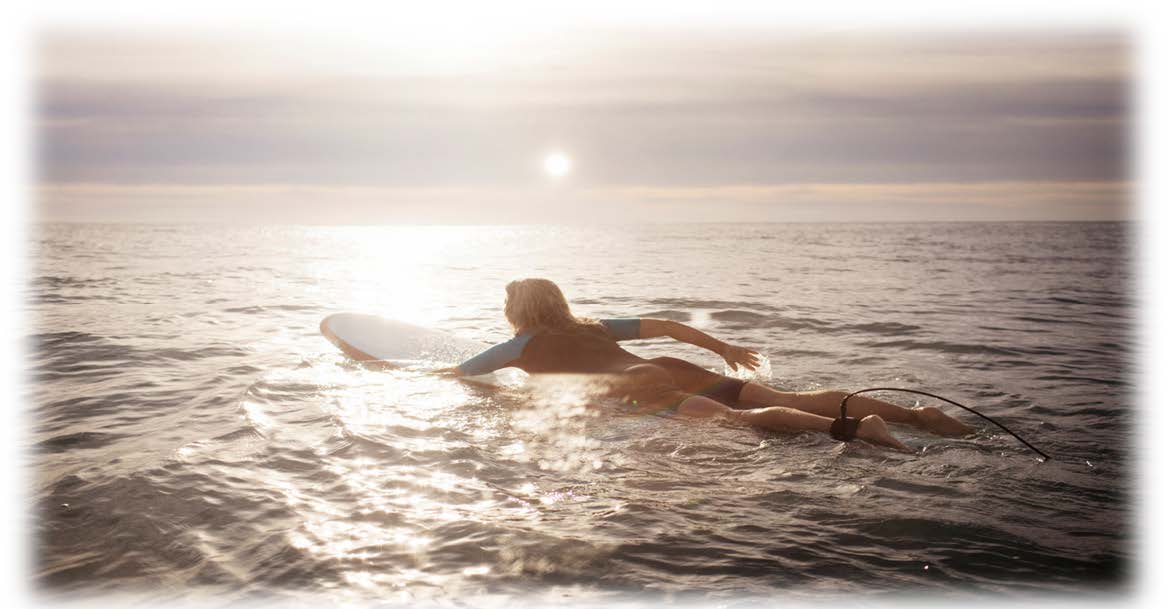 Surf case ruling finds in favour of activity provider5th March 2024 - 2:26 pm
Surf case ruling finds in favour of activity provider5th March 2024 - 2:26 pm
Covid-19 Updates
 COVID 19 Update – NYA – Managing youth sector activities and spaces24th June 2021 - 2:40 pm
COVID 19 Update – NYA – Managing youth sector activities and spaces24th June 2021 - 2:40 pm
Activities Industry Mutual
90 Fenchurch Street,
London
EC3M 4ST

